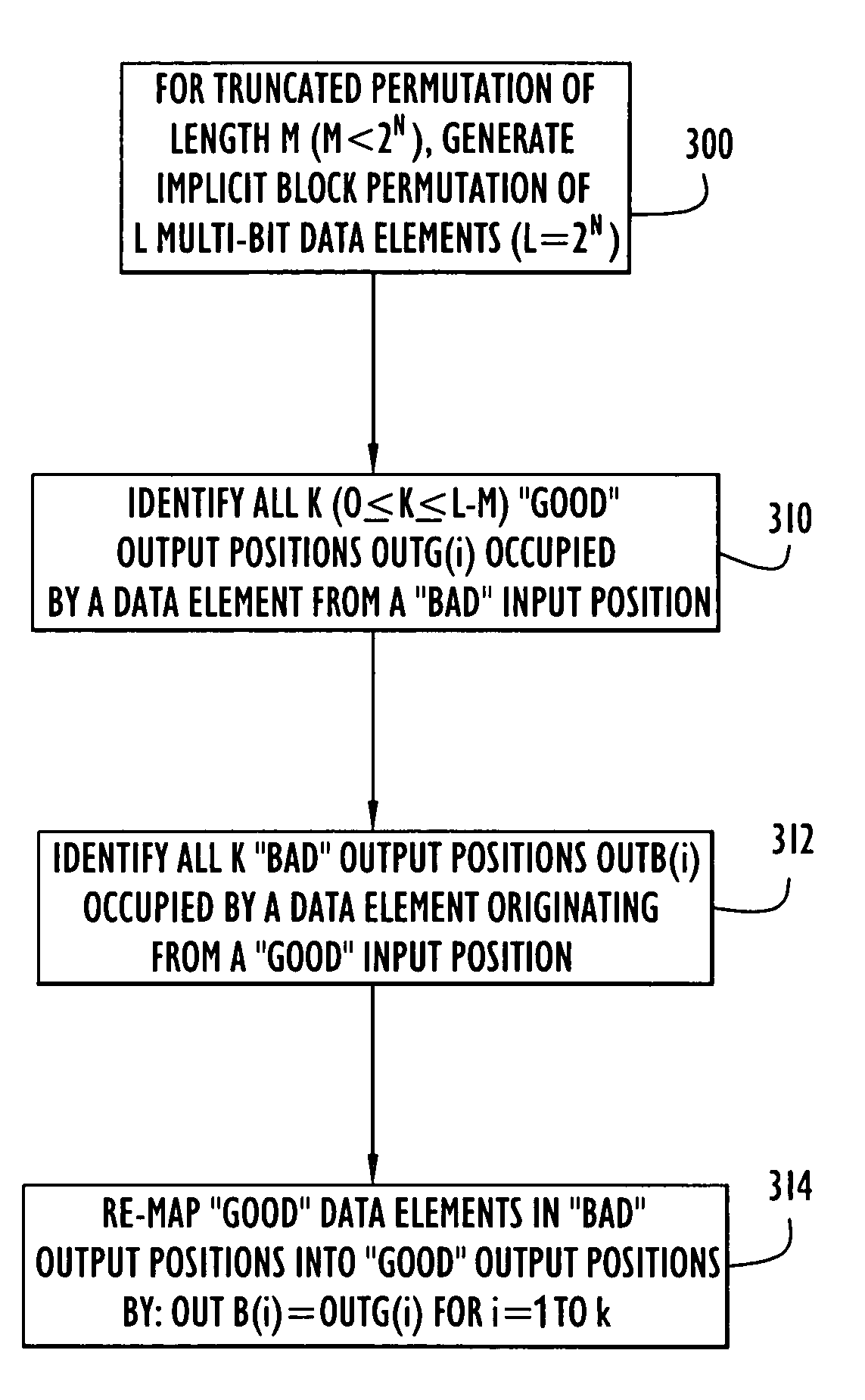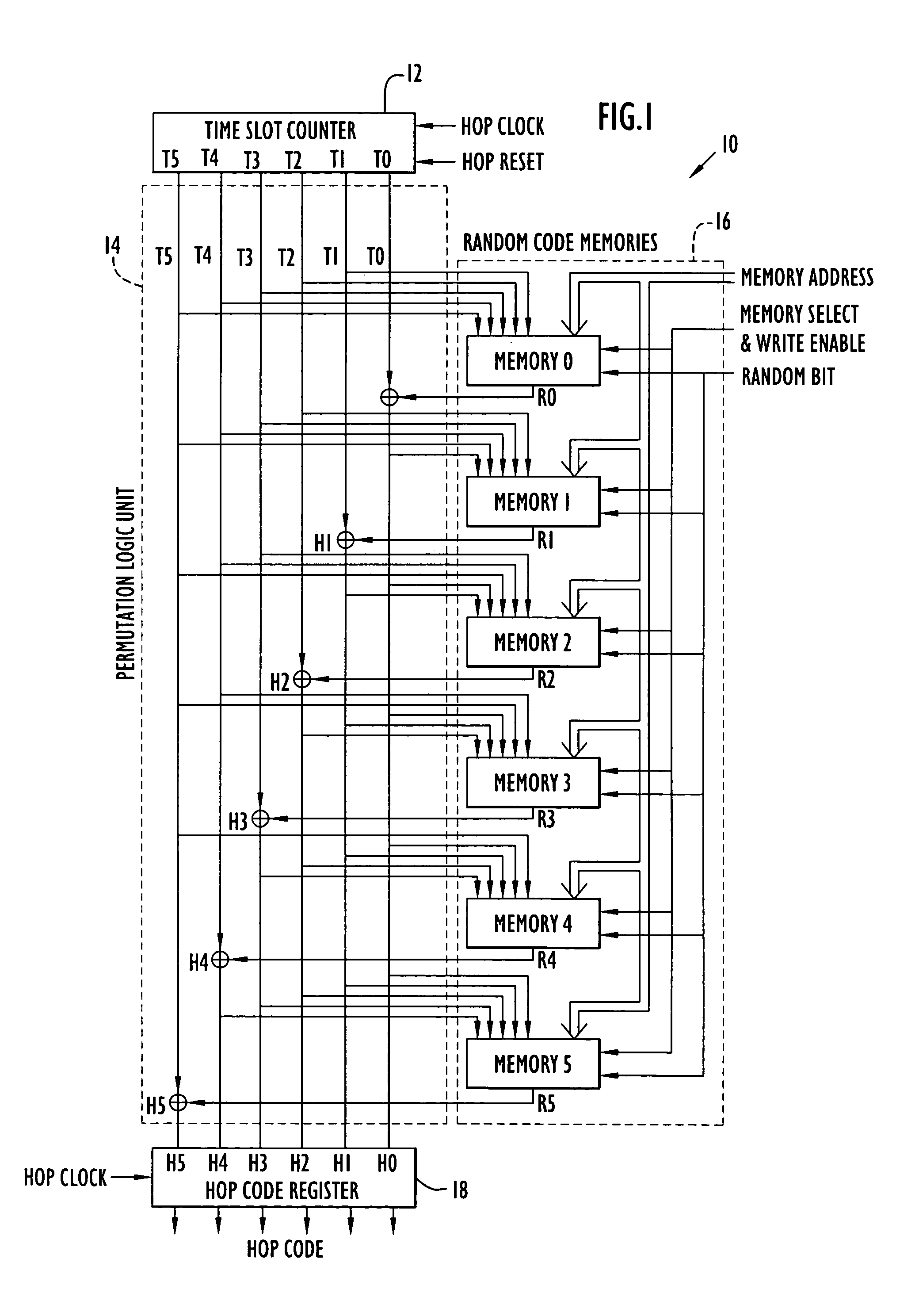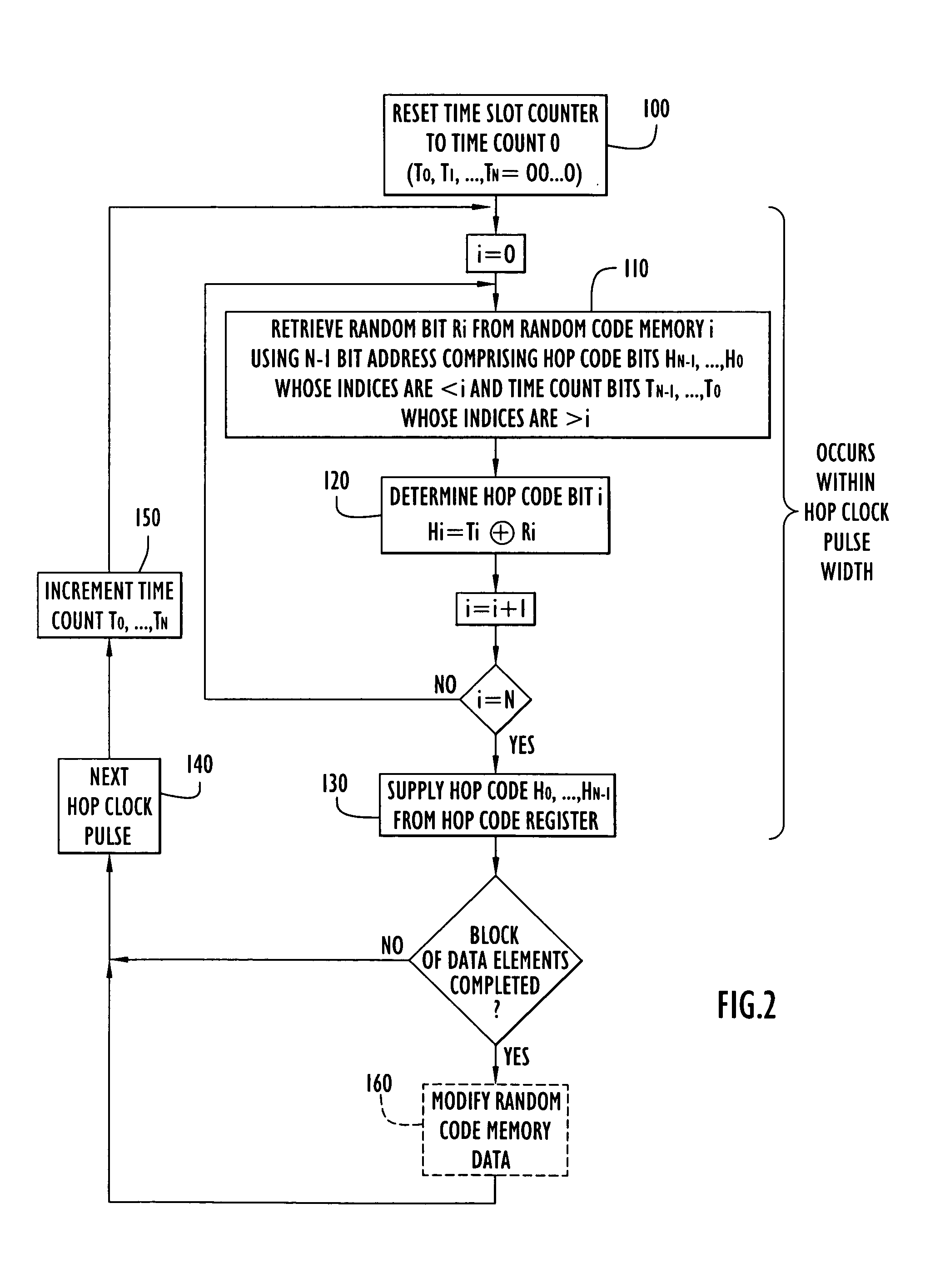Method and apparatus for generating random permutations
- Summary
- Abstract
- Description
- Claims
- Application Information
AI Technical Summary
Benefits of technology
Problems solved by technology
Method used
Image
Examples
Embodiment Construction
[0033]The following detailed explanations of FIGS. 1–5 and of the preferred embodiments reveal the methods and apparatus of the present invention. In accordance with the present invention, an input sequence of data elements is randomly permuted to produce an output sequence of data elements. As used herein, the term data element refers to an item, object, number, character or other piece of information that is represented by symbols, such as a plurality of binary bits. The input sequence of data elements comprises blocks of several such data elements in a particular order, with each data element occurring once within each block. The input sequence may include any number of successive blocks of data elements. For example, the input sequence can be a repeating count of sixteen decimal numbers beginning with zero and increasing incrementally to fifteen. Each of the numbers in the block of sixteen numbers is distinct from the other numbers in the block, with each number being represente...
PUM
 Login to View More
Login to View More Abstract
Description
Claims
Application Information
 Login to View More
Login to View More - R&D
- Intellectual Property
- Life Sciences
- Materials
- Tech Scout
- Unparalleled Data Quality
- Higher Quality Content
- 60% Fewer Hallucinations
Browse by: Latest US Patents, China's latest patents, Technical Efficacy Thesaurus, Application Domain, Technology Topic, Popular Technical Reports.
© 2025 PatSnap. All rights reserved.Legal|Privacy policy|Modern Slavery Act Transparency Statement|Sitemap|About US| Contact US: help@patsnap.com



